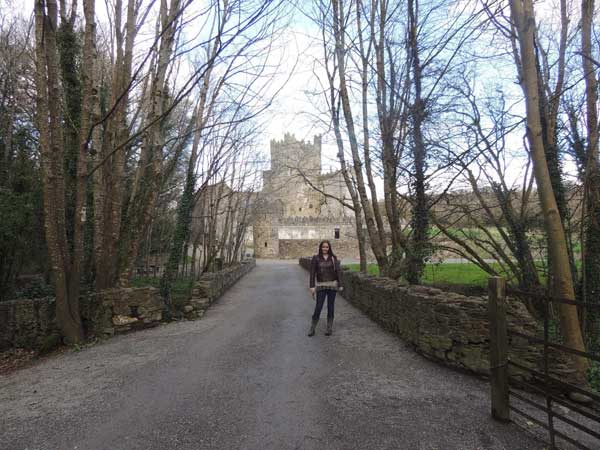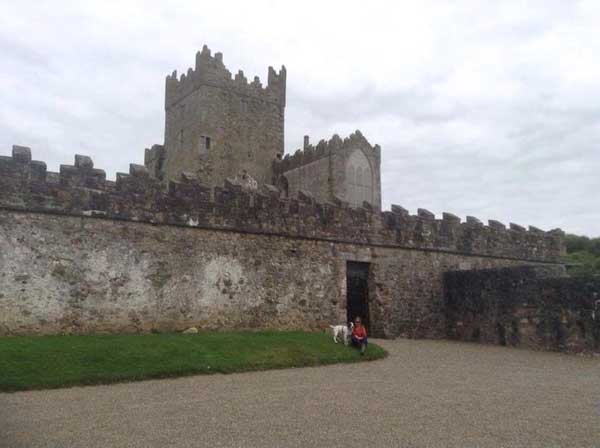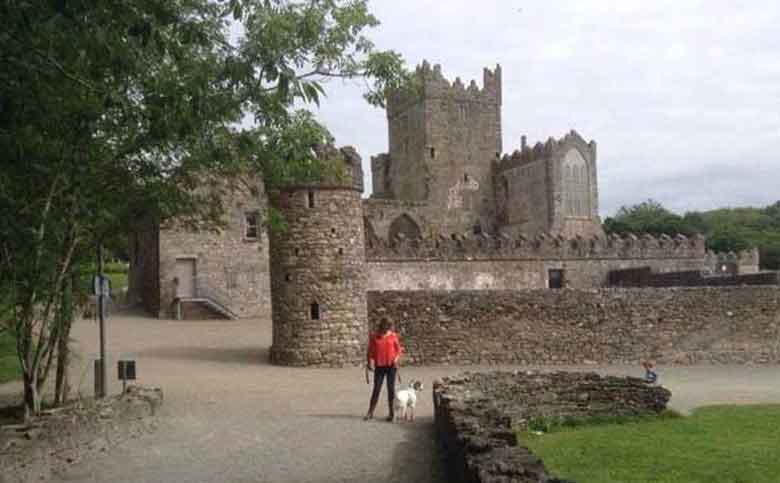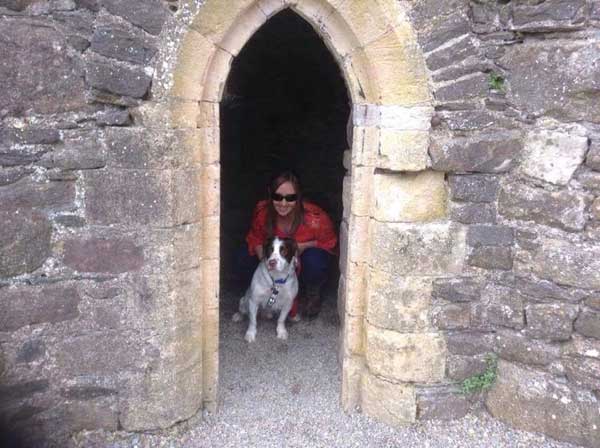Located 16km south of New Ross off the R734
Contact Information
Tintern Abbey, Saltmills, New Ross, County Wexford.
Telephone : +353 (0)51 562650
Winter Telephone : +353 (0)56 772 4623
E-Mail : tinternabbey@opw.ie
Admission fees
Adult: €5.00
Group/ Senior: €3.00
Child/student : €3.00
Family: €13.00
Children under 16 must be accompanied by an adult at all times.
Opening Hours 2018
Open from the 29th of March – 30th of October 0930 – 1700
Summer opening hours
June, July and August 1000 – 1730
The last admission to Tintern Abbey is 45 minutes before closing
Facilities
• Tintern Abbey Exhibition
• Toilet facilities
• Car parking facilities
• Tea Rooms
Tour Information
• Guided Tours – Maximum Number of people is 40-45
• Leaflet and guidebooks are available in English
• Photography and Video are allowed at Tintern Abbey
• No pets are allowed except for service animals
• The average length of a visit to Tintern Abbey is 1 hour
Where is Tintern Abbey Located?
Tintern Abbey is a must-see for anyone visiting the south and south-east of Ireland. Located 16km from the beautiful medieval town of New Ross, Tintern Abbey is one of the most historic and enchanting medieval Abbeys in Ireland.
Soaked in legend and associated with some of the medieval worlds most wonderful historic figures. Visiting Tintern Abbey is like taking a step back in time to a golden age of Irish medieval history.
Driving onto the magnificent property and lands of Tintern Abbey is a wondrous experience, there is very little development in this area, so you are surrounded by lush green pastures and enchanted forests, time may have ravaged this once complete and working Abbey but it has also preserved it in its original context.
Fields full of sheep and live stock remind you that this area is strongly dependant on agriculture as it has been for centuries.
They say every building tells a tale and Tintern Abbey does not disappoint in this regard.
Tintern Abbey’s illustrious past is deeply and forever associated with the Medieval Worlds most famous Knight William Marshal who is remembered as “the greatest knight that ever lived”.
A man of humble beginnings rose to be one of the medieval worlds most powerful men. A man whose association with Tintern is powerful and soaked in Legend.
The Legend begins with his marriage to one of Ireland’s most famous daughters Isabel de Clare, the only daughter and heir of the Norman Lord Strongbow and Aoife MacMurrough.
The Marshal was a favorite of King Henry II and was granted Isabel’s hand in marriage; this marriage was also approved of by Richard The Lionheart.
This marriage resulted in The Marshal being granted her father’s titles and lands, including the lands of Tintern Abbey and extensive holding in the providence of Leinster.
The Marshal became The Earl of Pembroke and Lord of Leinster. The legend begins with a faithful voyage taken by The Marshal and Isabel to survey their Irish lands.
Departing from Pembroke, Wales, their crossing to Ireland was to be one of the most eventful voyages in Irish history. The tempestuous and rough Irish Sea unleashed her might upon The Marshal’s fleet.
Legend says that The Marshal dropped to his knees aboard his ship with his family and swore that if they survived the night of the worst storm he had ever witnessed, he swore to build an Abbey on the site where they would make landfall. After their safe arrival at Bannow Bay, this wondrous piece of architecture was conceived.
The Marshal famed for his loyalty, honor and for keeping his word was steadfast in his actions, a man of his word and he dutifully commissioned Tintern Abbey, the building stated in 1200.
The Marshal granted 3.500 hectres of land to the Cistercian Order. The name Tintern Comes from Tintern Abbey in Wales, know as Tintern Abbey Major, the motherhouse of the Abbey we see today.

Tintern Abbey in Wexford was to be forever known as “Tintern de Veto” or “Tintern of the Vow”. It was to be inbabited by monks that came from the mother abbey at Tintern Abbey Major. The Marshal was also patron of Tintern Abbey Major, which was founded by his wife Isabel’s Grand Uncle, Walter de Clare also known as Walter FitzRichard de Clare . Preserving the de Clare family legacy as patrons of the Cistercian Order.
The ruins of Tintern Abbey are well preserved with the nave, chancel, tower, chapel and cloister still visible and intact. Tintern Abbey would have been designed in a similar fashion of abbeys at that time taking inspiration from Mellifont abbey.
With its cloister positioned to the south of the structure, which would have been surrounded by other religious and domestic structures.
Tintern Abbey also contains a cruciform shaped chapel with is located to the North. You will witness wonderful architectural features such as an extensive collection of Medieval gargoyles.
However it is important to remember when visiting Tintern Abbey that this is a multiphase piece of architecture and what was once an Abbey became a home for the Colclough family from the 16th Century. In 1575 Anthony Colclough of Staffordshire England was granted the lands around Tintern Abbey, after the infamous event in history known, as the Dissolution of the Monasteries.
Anthony Colclough was a soldier of the infamous King Henry VIII of England. The Colclough Family made extensive changes to Tintern Abbey, morphing the Medieval religious structure into a wealthy and fashionable home.
Making this building fluid through time, adapting to the changing climate of history. The later buildings and architectural features of Tintern Abbey can all be credited to the Colclough Family and their descendants, including the world famous Colclough Walled Gardens. The Abbey was granted to the Irish State by the last member of the Colclough Family to reside at Tintern Abbey, Lucey Marie Biddulph. The Colclough Family were to be invested as Baronets.
Between the years of 1982 and 2007, The Irish National Monuments Service of the Irish Office of Public Works carried out extensive archaeological excavations and heritage preservation efforts at Tintern Abbey.
The archaeological excavations carried out at Tintern Abbey proved to be extremely fruitful, giving us a wonderful insight into the lives of the medieval monks that inhabited this structure.

The discovery that was a medieval sewer system was to forth essential information about the types of foods that the monks would have consumed centuries ago.
This may seem a simple discovery but it was to prove the wealth of the abbey and the wonderful diet the monks consumed with a wide range of cereals and expensive meats being some of the items they would have dined upon.
Thus proving Tintern Abbey as one of the wealthiest medieval monastic settlements in Ireland.
Tintern Abbey is a place that brings myth and legend to life and is an essential place to visit, remember you are walking in the footsteps of The Marshal as you soak in the medieval atmosphere of this majestic Abbey.
Walking over the bridges and through the enchanted woodland around Tintern Abbey is like taking a trip in a time machine, transporting you back to Medieval Ireland, leaving you with an ecstatic feeling of being at one with history and the beauty of stunning Irish countryside.


